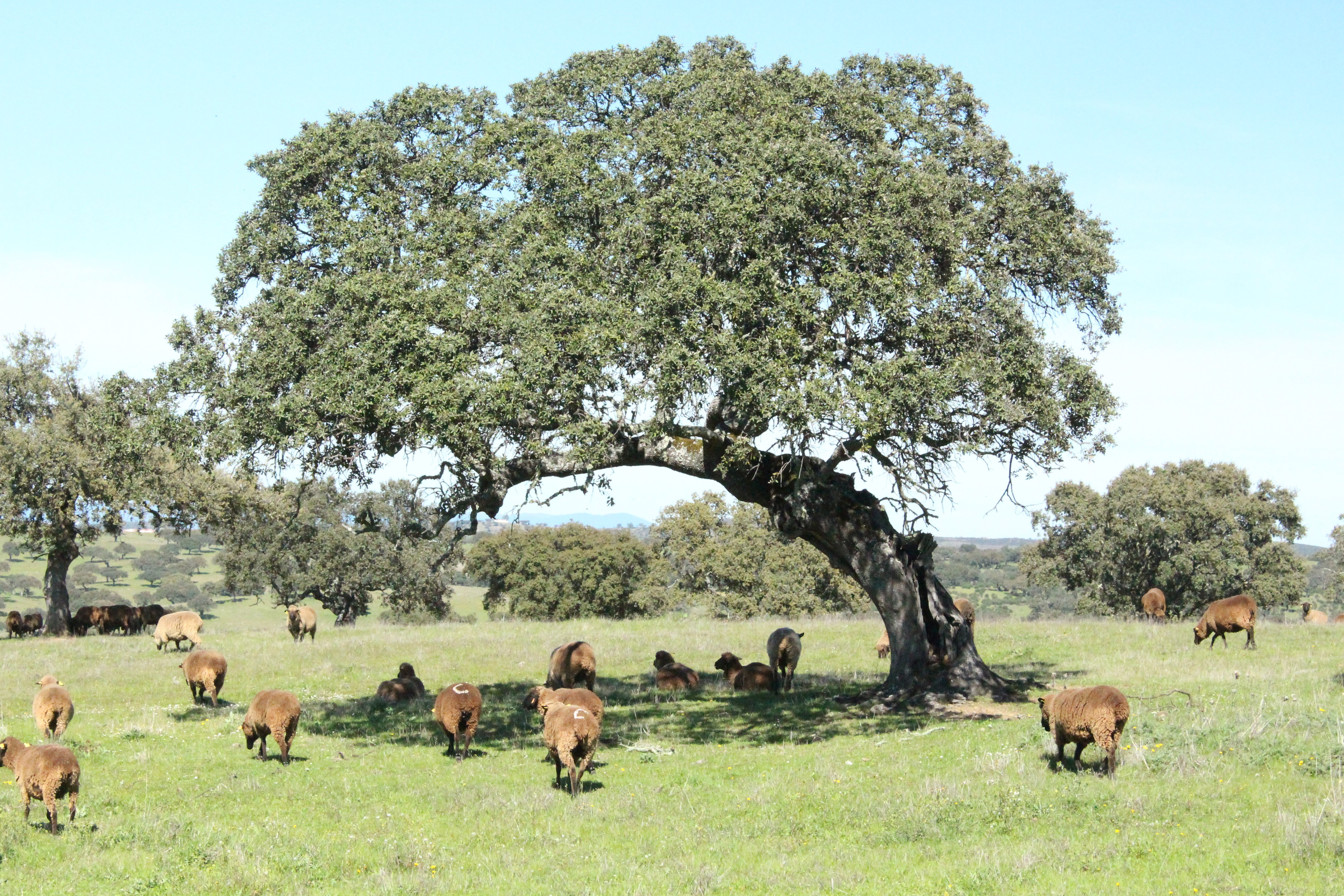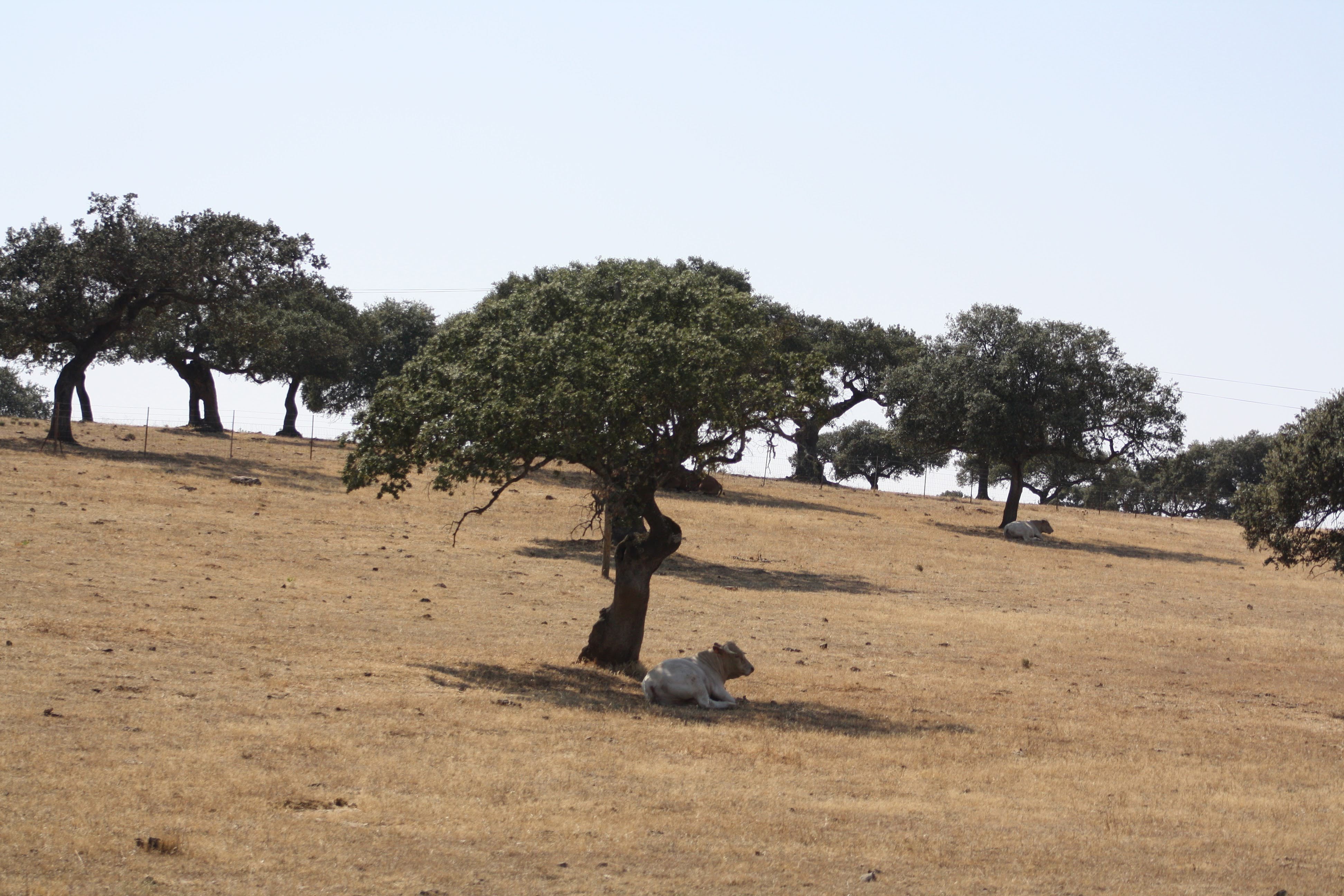Reis et al 2014 and Belo et al 2014 provide two extensive articles framing agroforestry systems in Portugal. The first with an overview of the agroforestry systems (AFS) in Portugal, and the second with a zoom to the most important agroforestry system: The montado.
These authors report AFS being present in about 25% of the agricultural and forestry mainland territory. The AFS integrate species of trees such as holm oak, cork oak, chestnut, pine and carob, with grazing animals under cover, and the fruits production. These authors identify five major areas of agroforestry based on productive and economic variables. After applying multivariate statistics they differentiate 5 regions: 1) the North Atlantic, 2) the North Transmontano, 3) a “transition” region, 4) the South-montado and 5) the Algarve. These regions were characterized by its territorial use from the production function perspective (commodities) and their economic dimension depending on the livestock and the non-wood forest products such as carob, pinion, chestnut and/or cork. There is a great diversity of the five types of agroforestry areas, arising from climatic factors, and tree species that dominate the landscape. This diversity is strongly marked by the demographic, the regional capacity for wealth creation, the major agricultural and forestry production, the agricultural specialization and the structures of agricultural production.
The montado system predominates in the South-montado region, in the area of cork oak and holm oak (and to a lesser extent of the umbrella pine). The montado is the most extensive and important agroforestry system in Portugal. The most relevant aspects of the technical and economic situation of the montado system are forage resources and livestock activities with higher economic value. The same authors also report a reflection of the weaknesses of the economic and environmental ecosystem, demonstrating its value and the impact of the common agricultural policy.
Statistics are fuzzy concerning agroforestry. This is related to the nature of the agroforestry systems themselves as the limits of classification between forests and agroforests are unclear In agroforestry systems the understorey management is a dynamic land use rotating from conventional cropping, pasture, and sometimes more than a year of set-aside . This promotes shrub occurrence being the area at this stage classified as forest by either misinterpretation of the land management context or by aerial-photo/satellite imagery interpretation that detects land cover rather lands use. However, according to the 2010 National Forest Inventory (NFI), forests/agroforests cover are 716,000 and 413,000 ha respectively for cork oak and holm oak respectively. All these area accounts for the 30% of the total carbon (C) present in Portuguese forests, with cork oak storing 64 million x 106 Mg CO2eq and holm oak storing 20 million Mg CO2eq. Since 1998, the figures show a slight increase of the cork oak area (713 000 to 716 000 ha) and a slight decrease in holm oak (462 000 to 413 000 ha).
As reflected in the statistics as stated above, agroforestry has been part of the farm management in Portugal for centuries, therefore, it is with natural occurrence that agroforestry interests are represented in associations representing farmers, foresters or landowners as for example, the União da Floresta Mediterrânica, the Associação Florestal de Portugal, the Associação Portuguesa da Cortiça, the Federação Nacional de Produtores Florestais (FENAFLORESTA), Associação Portuguesa da Castanha, or associations with multifunctional land use (e.g. www.aguiarfloresta.org), represent hundreds of land managers dealing with agroforestry. Also the Forest Research Center founder member of EURAF has been maintaining the main link of EURAF with Portugal gathering members and collaborators from existing associations for EURAF and has been supporting EURAF´s webpage since its creation. Currently there are 27 individual members.
There are a number of activities concerning agroforestry in Portugal (send us an email to update this section):
- The Feira Internacional da Cortiça
- Congresso Internacional sobre o montado de sobro e cortiça
- Feira do montado (Portel)
- Festa da Primavera
- Festa do Outono
- Norcaça, Norpesca, Norcastanha (Bragança)
- You can even use a cork oak montado agroforestry brand in your services and products by adhering to some rules developed by www.montadodesobroecortica.pt initiative
As one of the oldest countries in Europe, policy records concerning the use of trees date from centuries ago. Although they are here shown as historical references (based on Mendes 2002), they help to understand the awareness of agroforestry in Portugal and its importance in land use management. Portugal has been transposing european policy into national legislation since the first appearance of the article 44 in regulation 1698/2005.
- 1546 – Letter from the “sailing business” to the king, asking to avoid over cork extraction due to “wood weakness” in cork wood.
-
7th August 1546 – King João III forbids cork oak cuttings for charcoal production in a region along the tagus river.
- “Tree Law” of year 1565 determining the plantation of trees in “all adequate land”.
- 1605 – Felipe II protects the royal forests against cuts, hunting and abusing grazing.
- 1783 – D. Maria I forbids indiscriminated tree cuttings and induced fire.
- 1926 – Starts the “wheat campaign”, an intensive agricultural demand with depletion of trees in the land.
- 1986 – Portugal enters in EU and in 1980’s/1990’s, new forest plantations occur.
- 2008 – Transposed EU directive 1698/2005 to Portuguese law supporting agroforestry.
- 2016 – Transposed the directive Decision CE 9896 (2014) to Portuguese law supporting agroforestry.
Details on the implementation of the measure 8.1.2 and published legislation is are available in the PDR2020 website.
 |
 |
|
| Black merino sheep under scattered holm oak in Southern Portugal. Photo by João Palma |
New agroforesty based products emerging. Acorn flour can be a healthier (and tastier) alternative. What about coffee without caffeine? Caffeine is needed for some, but so many coffee breaks during a day can make you go high! Why not alternating with acorn roasted coffee? Photo by João Palma |
 |
| Cereal silvoarable agroforestry in south Portugal. Photo by João Palma |
 |
| What does an agroforestry cow say to another? A tree for each one of us, alright? Photo by João Palma |











